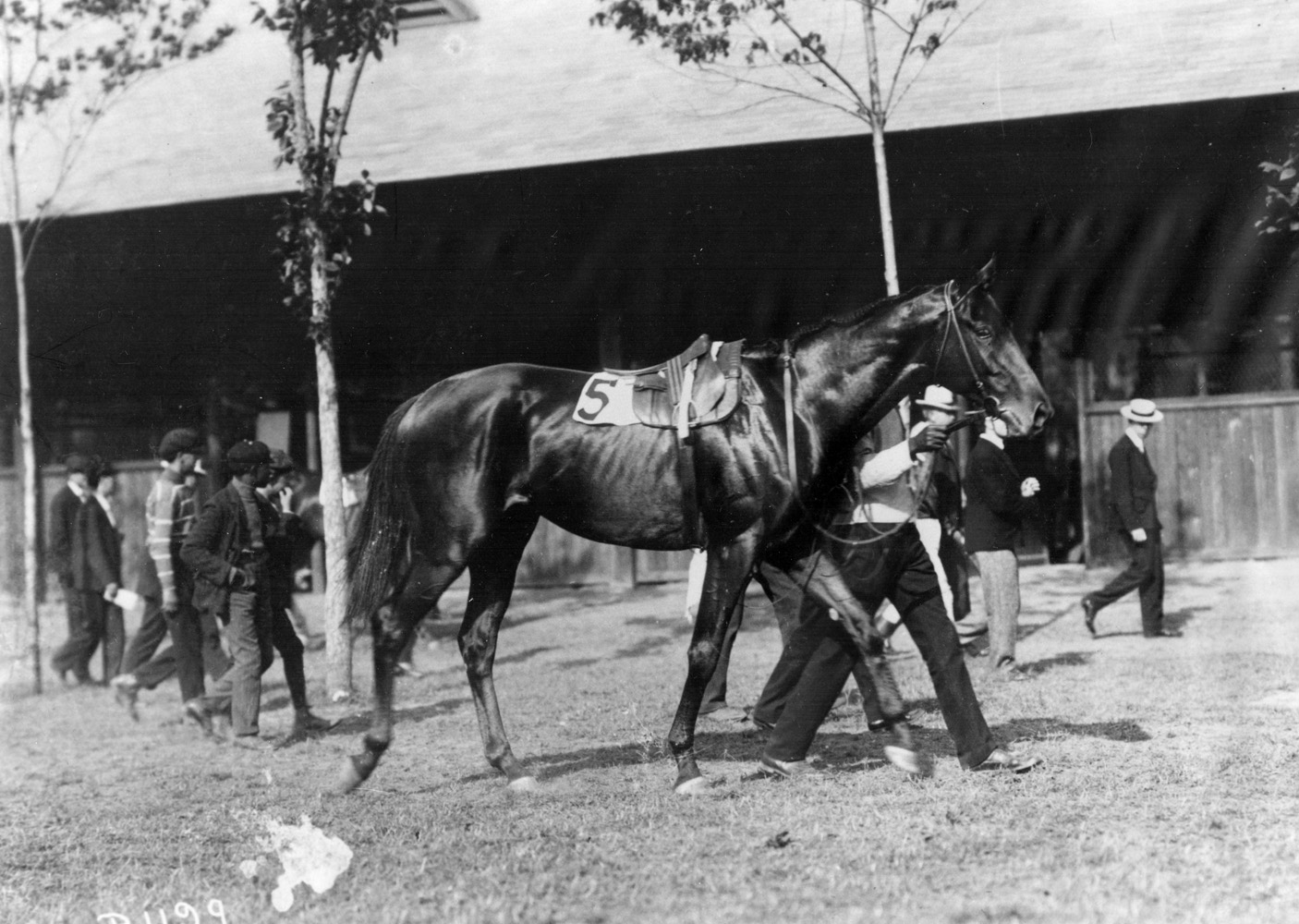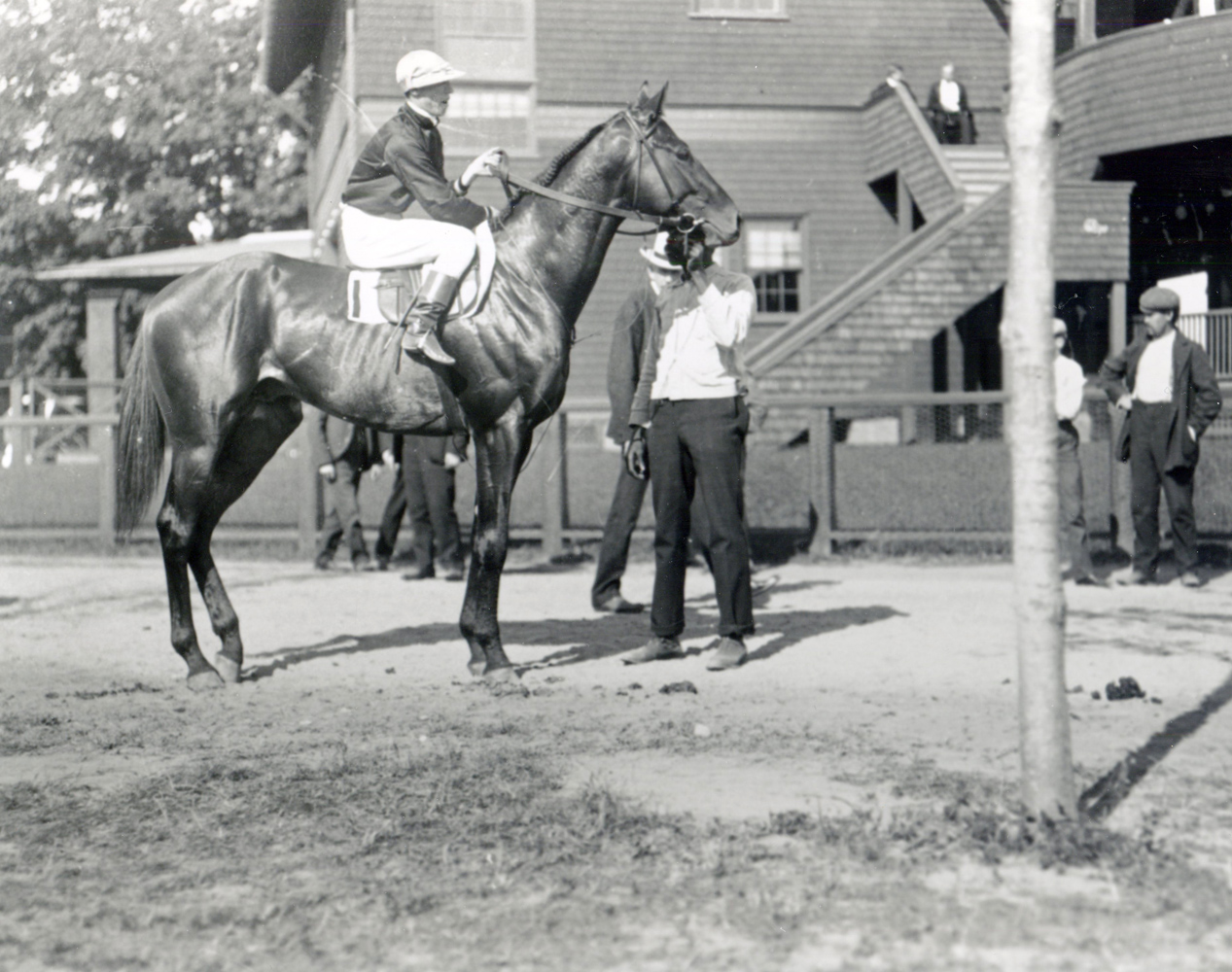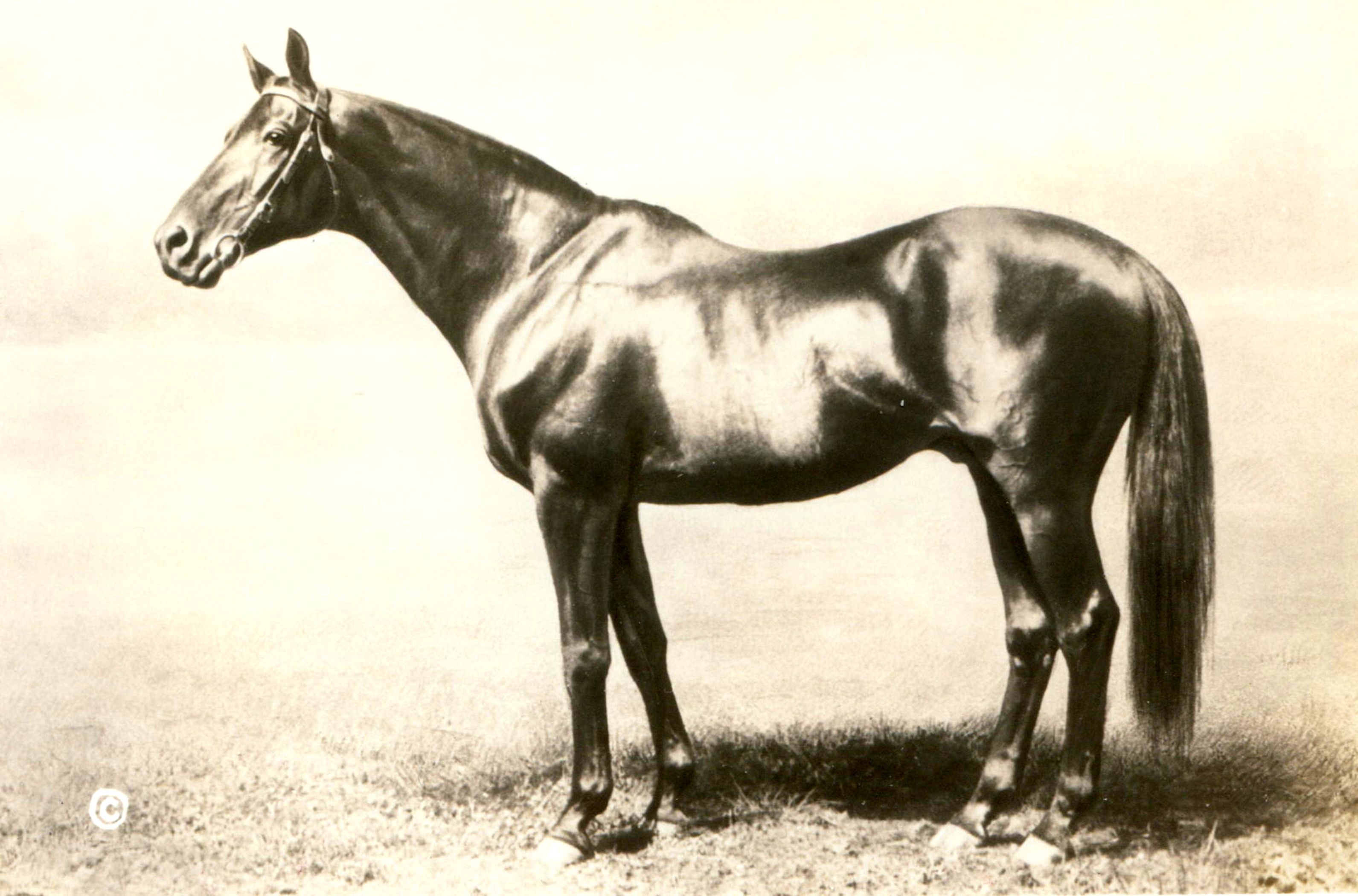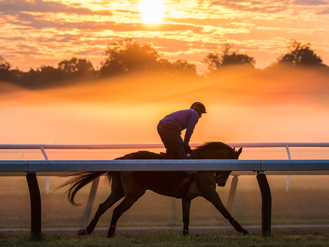Broomstick (KY)
Bred at Col. Milton Young’s McGrathiana Stud in Kentucky, Broomstick was a small bay son of the great Ben Brush out of the Galliard mare Elf. He was included in a lot of 10 yearlings Col. Young sold for a total of $17,100 to Capt. Samuel S. Brown.

1956
1901
Ben Brush
Elf
Galliard
Milton Young
Samuel S. Brown
Peter Wimmer
Robert Tucker
1903-1905
$74,730
Racing Record
39
Starts
| 1903 | 9 | 3 | 4 | 0 | $25400 $25,400 |
| 1904 | 15 | 6 | 4 | 3 | $37970 $37,970 |
| 1905 | 15 | 5 | 3 | 2 | $11360 $11,360 |
Biography
Bred at Col. Milton Young’s McGrathiana Stud in Kentucky, Broomstick was a small bay son of the great Ben Brush out of the Galliard mare Elf. He was included in a lot of 10 yearlings Col. Young sold for a total of $17,100 to Capt. Samuel S. Brown.
A millionaire coal magnate, Capt. Brown was a member of The Jockey Club and a major stockholder in Churchill Downs. He had been a fixture in racing since his Troubadour won the 1896 Suburban Handicap and had beaten Miss Woodford in a match race.
Trained as a 2-year-old by Peter Wimmer, Broomstick made his debut May 7, 1903, winning the $4,860 Juvenile Stakes at Morris Park by a head over the favored Precious Stone. Three weeks later, Broomstick won the $5,540 Expectation Stakes with ease and then won the $10,600 Great American Stakes at Gravesend.
Broomstick’s early success led to an increase in the weights he was forced to carry. With an impost of 129 pounds, Broomstick lost for the first time that June by a length to Pulsus (carrying 122 pounds) in the Great Trial Stakes. With 128 pounds, Broomstick then finished second to Gallant (114) in the Spring Stakes. He did not win another race that year, finishing his juvenile campaign with a record of 3-4-0 and earnings of $25,400 from nine starts.
Bob Tucker took over the training of Capt. Brown’s horses in 1904 and Broomstick made his 3-year-old debut a winning one May 12 in an overnighter at Morris Park. Broomstick’s finest performance took place in the $25,000 Brighton Handicap. With Hall of Famer Tommy Burns in the irons, Broomstick set an American record for 1¼ miles of 2:02⅘, breaking the previous mark set a year before by Waterboy by two-fifths of a second. Broomstick’s record stood until broken by Whisk Broom II, a son of Broomstick, in the 1913 Suburban Handicap.
Carrying 129 pounds, Broomstick won the Travers Stakes in impressive fashion, defeating Bobadil (116) and Auditor (111). He added a victory in the Flying Handicap at Sheepshead Bay later in the year for his final career stakes win. Broomstick posted a record of 6-4-3 and earnings of $37,970 as a 3-year-old.
As a 4-year-old, Broomstick ran into one of the top horses of the early 20th century in the 3-year-old Sysonby, owned by James R. Keene. In each of the four times they met in 1905, Sysonby got the better of his older foe, winning the Commonwealth Handicap, Great Republic Stakes, Century Stakes, and Annual Champion Stakes.
When Sysonby ran elsewhere, Broomstick won five races, but none of them were stakes. He carried 133 pounds to victory in a six-furlong overnighter at Sheepshead Bay and he defeated Ort Wells and Pulsus at one mile at Sheepshead, but Broomstick was not considered to have the same quality he displayed the previous two years.
Broomstick was retired to Capt. Brown’s Senorita Stud near Lexington, Kentucky, with a career record of 14-11-5 and earnings of $74,730 from 39 starts. He was bred to a small book of mares, including Audience, winner of the Kentucky Oaks and Tennessee Oaks. Audience produced a chestnut colt that was sold as a yearling for $2,500 to Harry Payne Whitney. Capt. Brown died in 1906 and his thoroughbred interests were inherited by his brother, Capt. W. Harry Brown, who eventually decided to sell. The dispersal was held Nov. 23, 1908, in Lexington.
Trainer A. J. Joyner was breaking the Broomstick—Audience colt at the time and liked what he saw. He advised Whitney to buy Broomstick and anything else in the sale by him. Broomstick topped the sale, going to Whitney for $7,250. At the time, Whitney was collecting the finest broodmare band in America and Broomstick was established as a quality young stallion even before his reputation was gained from progeny out of the Whitney mares.
Broomstick sired seven foals in his first crop from Senorita Stud mares. All seven won at age 2, including Whisk Broom II and Scarpia. Broomstick sired a dozen foals in his second crop, including Kentucky Derby winner Meridian. In his third and last crop at Senorita, Broomstick sired 17 foals, getting three more stakes winners, including English Two Thousand Guineas winner Sweeper.
Whisk Broom II raced in England while the sport was shut down in New York during 1911 and 1912. When racing returned to New York in 1913, Whisk Broom II was brought back from England and won the Metropolitan Handicap with 126 pounds, the Suburban Handicap with 139, and the Brooklyn Handicap with 130. Forty years had passed when Tom Fool became the next horse to win the Handicap Triple Crown in 1953.
Broomstick ranked among the top 10 sires in progeny earnings from 1911 through 1927. He topped the list in 1913, 1914, and 1915. The best of Broomstick’s progeny was Hall of Famer Regret, the first filly to win the Kentucky Derby. Other good ones included Cudgel, Wildair, Spot Cash, Halcyon, and Bostonian. Those whose sturdiness outlasted their class included Dr. Clark, winner of 44 of 265 starts in 13 years. He was Broomstick’s lone $100,000 earner. Other notables included Tippity Witchet, who won 78 of 266 starts and had earnings of $88,241 in 13 years, and Leochares, winner of 62 races and $68,867 in nine years.
Broomstick died in 1931 at the age of 30.
Media








